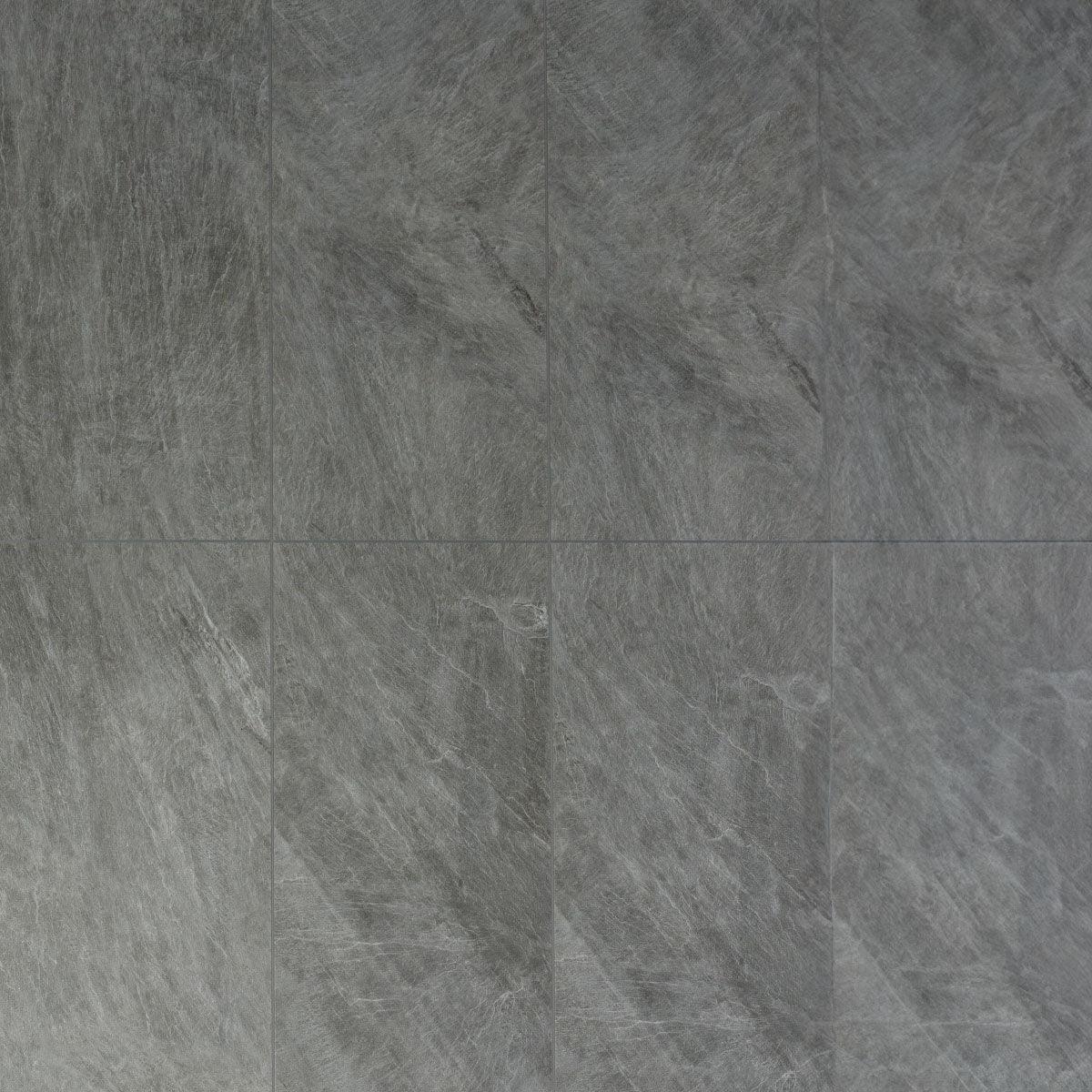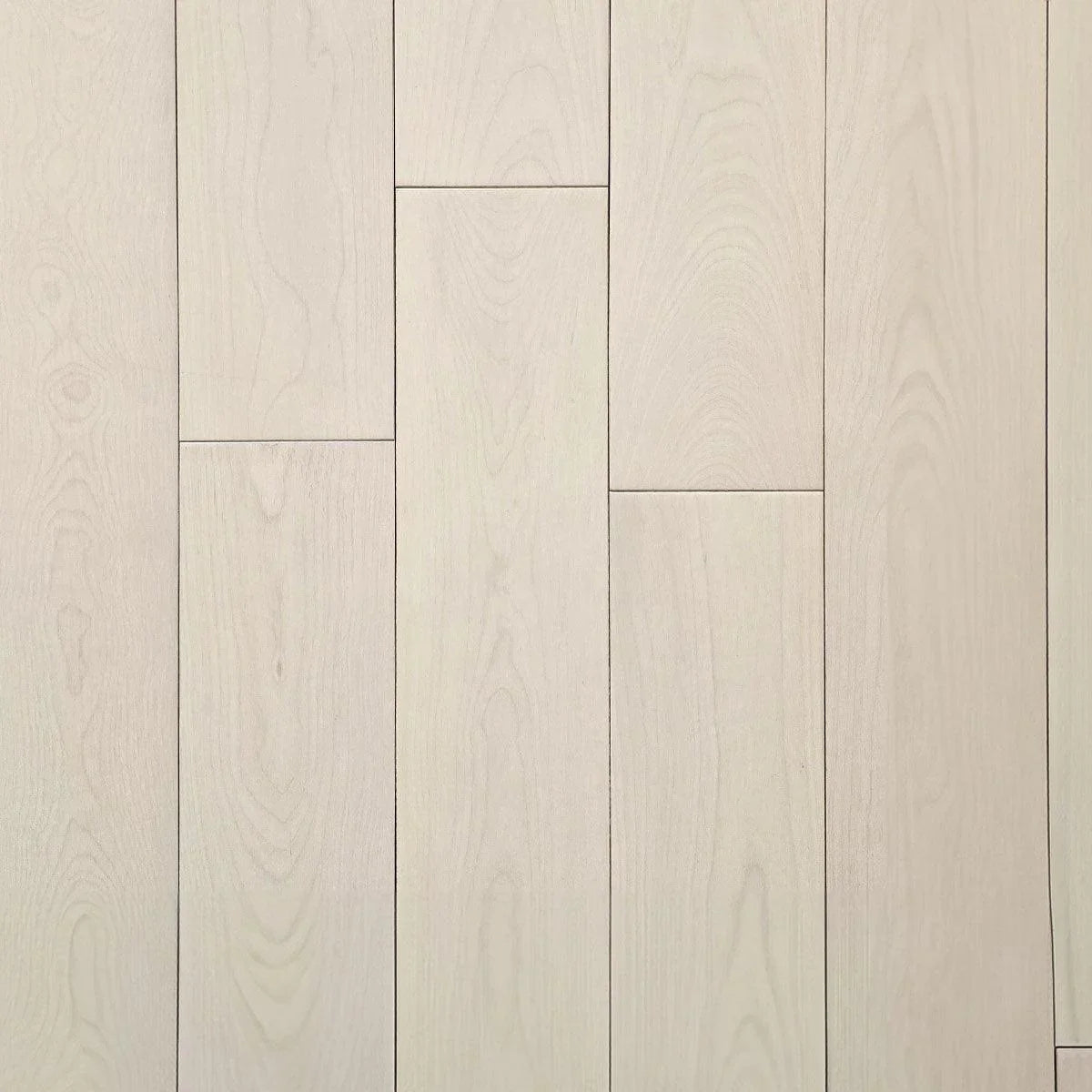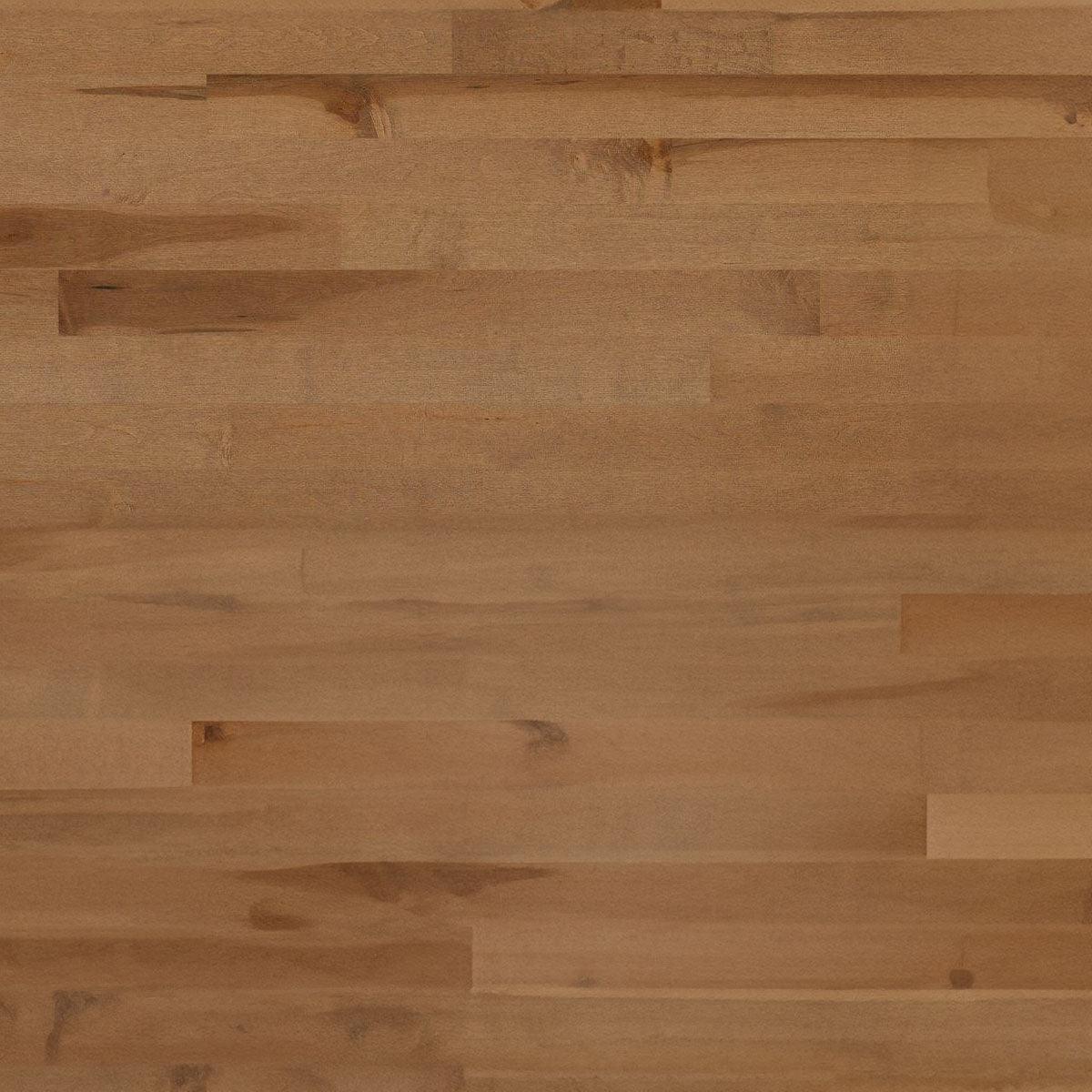Welcome to the heart of your home—the kitchen! It's where you kickstart your day with a steaming cup of coffee and where everyone gathers, whether you're hosting a dinner party or enjoying a family meal. If you’re thinking about giving your kitchen a makeover, or maybe you’re just tired of hearing your old floor squeak every time you sneak in for a midnight snack, choosing the right flooring is crucial. It’s literally the foundation of where all the action happens! From bustling breakfasts to late-night heart-to-hearts by the fridge, your flooring needs to handle it all.
But don’t worry, I’ve got your back. Whether you prefer the sleek look of hardwood or the practical charm of vinyl, we’re going to walk through all the options. We’ll discuss durability, maintenance, and, of course, style—because your floor should not only be tough but also a reflection of your taste. Ready to get started?
Let’s dive in and find the perfect kitchen floor for you!
Understanding Your Lifestyle and Needs
Choosing the right kitchen flooring isn't just about picking a color or a pattern—it’s about finding something that fits your life. Are you the culinary wizard of the family, constantly whipping up dishes? Or maybe your kitchen doubles as a party zone or a makeshift art studio for the kids? If that sounds like you, durability and ease of maintenance should be top of your list. You'll want a floor that can handle the chaos of daily spills, pet claws, and crayon marks without losing its shine.
On the other hand, if you enjoy a quiet cup of coffee in the morning in a softly lit, serene space, comfort might be your priority. Here, warmth underfoot and a pleasant tactile feel might guide your choices more than sheer ruggedness.
Exploring Different Flooring Types: Pros, Cons, and What's Best for You
Choosing the right flooring for your kitchen is crucial, as it needs to withstand heavy traffic, spills, and frequent cleaning while enhancing the room’s aesthetic appeal. From classic hardwood to innovative bamboo, each material offers distinct advantages and challenges. In this guide, we'll explore the different types of kitchen flooring, delving into their benefits, drawbacks, and ideal uses to help you make an informed decision that aligns with your lifestyle and decor preferences.
1. Tile Flooring
Tile Flooring is available in a variety of materials including ceramic and porcelain tile offering an extensive range of colors from natural earth tones to vibrant hues. These tiles can be found in several finishes such as glazed, matte, or textured, and come in diverse styles including patterned and mosaic designs, making them a versatile choice for any kitchen aesthetic.
Advantages
- Durable and long-lasting.
- Water-resistant, making it suitable for kitchen spills.
- Easy to clean and maintain.
- Available in a wide range of colors, patterns, and textures.
Disadvantages
- Cold and hard underfoot, which may be uncomfortable for some.
- Grout lines can accumulate dirt and require regular cleaning.
- Tiles can crack or chip if heavy objects are dropped on them.
2. Hardwood Flooring
Hardwood Flooring brings a classic appeal to the kitchen with options in several species like oak, maple, cherry, walnut, and hickory. The natural wood colors vary from light blondes to rich browns, and finishes can range from glossy to satin, including more textured options like hand-scraped or distressed, which can hide wear and tear better.
Advantages
- Adds warmth and elegance to the kitchen.
- Can be refinished to remove scratches and dents.
- Timeless appeal and increases the resale value of the home.
Disadvantages
- Susceptible to water damage and moisture, requiring careful maintenance.
- Can be scratched or dented, especially in high-traffic areas.
- Generally more expensive than other flooring options.
3. Vinyl Flooring
Vinyl Flooring is a durable and cushioned option that comes in styles such as sheet vinyl, vinyl tile, luxury vinyl tile (LVT), and luxury vinyl planks (LVP). It provides a comfortable surface underfoot and is available in a myriad of patterns and colors, making it ideal for high-traffic kitchen areas prone to spills and stains.
Advantages
- Budget-friendly and versatile.
- Durable and water-resistant.
- Comfortable underfoot and available in various styles.
- Easy to clean and maintain.
Disadvantages
- May not have the same aesthetic appeal as natural materials.
- Can be susceptible to damage from sharp objects.
- May emit volatile organic compounds (VOCs) during installation.
4. Laminate Flooring
Laminate Flooring offers the appearance of hardwood or tile at a more affordable price point. It is available in a wide range of colors and designs that mimic natural materials, and its textures can include smooth, embossed, or other tactile surfaces that replicate the feel of real wood or stone.
Advantages
- Affordable alternative to hardwood.
- Scratch-resistant and durable.
- Easy to install and available in various styles and patterns.
- Resistant to moisture, making it suitable for kitchens.
Disadvantages
- Cannot be refinished like hardwood.
- May not have the same visual appeal as natural materials.
- Can be damaged by standing water if not properly sealed at edges.
5. Cork Flooring
Ideal for those who spend a lot of time cooking. Cork is naturally cushioned, which eases strain on your legs and back. It’s also an eco-friendly choice that brings a unique, warm aesthetic to your space. Just remember, it does need regular sealing to maintain its resistance to moisture and stains.
Advantages
- Environmentally friendly and renewable.
- Comfortable underfoot and provides good insulation.
- Naturally resistant to mold, mildew, and pests.
- Unique and visually appealing.
Disadvantages
- Susceptible to moisture damage if not properly sealed.
- Can be prone to dents and scratches.
- Limited color and style options compared to other materials.
| Flooring Types | Advantages | Disadvantages |
| Tile Flooring | Durable, water-resistant, easy to clean, versatile | Cold and hard underfoot, grout lines require upkeep |
| Hardwood Flooring | Adds warmth and elegance, can be refinished | Susceptible to water damage, scratches and dents |
| Laminate Flooring | Affordable, scratch-resistant, easy to install | Cannot be refinished, may lack visual appeal |
| Vinyl Flooring | Budget-friendly, durable, water-resistant | Limited aesthetic appeal, may emit VOCs |
| Cork Flooring | Environmentally friendly, comfortable, visually appealing | Susceptible to moisture damage, prone to dents |
Understanding Textures: What Works Best in Kitchen Flooring
Selecting the right colors and textures for your kitchen flooring is crucial not only for achieving the desired aesthetic but also for ensuring functionality. Here’s how to make the right choice:
Consider Your Kitchen Style:
· Modern: Opt for sleek and minimalist flooring with clean lines and neutral colors like gray, white, or black. Glossy finishes or polished concrete can enhance the contemporary look.
· Traditional: Choose warm and inviting flooring with natural textures such as wood or stone. Earthy tones like brown, beige, or terracotta complement traditional kitchen designs.
· Rustic: Embrace the charm of rustic flooring with distressed wood or textured tiles. Warm, weathered colors like amber, taupe, or olive create a cozy ambiance reminiscent of a countryside kitchen.
Assess Visual Impact:
· Light vs. Dark: Light-colored flooring can make small kitchens feel more spacious and airy, while dark hues add drama and sophistication. Consider the amount of natural light in your kitchen when deciding on the color palette.
· Pattern vs. Solid: Patterned flooring can add visual interest and personality to your kitchen. Opt for geometric motifs, herringbone designs, or intricate patterns for a statement floor. Alternatively, solid colors offer a timeless and versatile backdrop for various kitchen styles.
Balance with Other Elements:
· Cabinet Color: Coordinate your flooring with the color of your kitchen cabinets for a cohesive look. Contrast light cabinets with dark flooring or vice versa to create visual balance and focal points.
· Countertops: Harmonize the flooring with your countertop material and color scheme. Choose complementary textures and tones to create a seamless kitchen design that flows from floor to ceiling.
Enhance Functionality:
· Texture: Consider the texture of your flooring to enhance safety and functionality. Matte or textured finishes offer better slip resistance, making them ideal for high-traffic areas like the kitchen. However, smooth surfaces are easier to clean and maintain.
· Durability: Prioritize durable materials such as porcelain tile, hardwood, or luxury vinyl that can withstand daily use. Look for scratch-resistant and water-resistant options to ensure longevity and ease of maintenance.
Experiment with Accents:
· Accent Tiles: Introduce accent tiles or borders to add visual interest and define different areas within your kitchen. Experiment with contrasting colors, shapes, or textures to create focal points or decorative borders.
· Rugs and Mats: Layer area rugs or kitchen mats over your flooring to add warmth, comfort, and personality. Choose rugs with patterns or vibrant colors to inject character into the space while protecting the flooring underneath.
Seek Inspiration:
· Online Resources: Browse design websites, home decor blogs, and social media platforms for inspiration and ideas. Explore color palettes, mood boards, and real-life kitchen designs to find the perfect flooring solution for your space.
· Professional Advice: When choosing the perfect colors and textures for your kitchen flooring, consider consulting with experts who specialize in this field. At Golden Elite, not only will you find a wide selection of top-quality flooring options, but you can also receive personalized advice from our experienced professionals. Whether you have concerns or need guidance on the best choices for your home, Golden Elite’s experts are here to help you make the most informed decisions. Visit us for a consultation and explore our extensive flooring collection.
By carefully considering your kitchen style, assessing visual impact, balancing with other elements, enhancing functionality, experimenting with accents, and seeking inspiration, you can select the best colors and textures for your kitchen flooring that reflect your personal style and meet your practical needs.
Key Considerations for Selecting Kitchen Flooring
Choosing the right kitchen flooring is a crucial decision that affects both the aesthetic appeal and functionality of one of the most frequented rooms in your home. Here are detailed factors to guide your selection process:
- Durability:
- Assess the material's ability to withstand high traffic, frequent spills, and ongoing wear. Ideal materials are those that maintain their appearance over time without significant damage.
- Opt for floors that are scratch, dent, and stain-resistant, particularly in a kitchen which is a high-activity area.
- Water Resistance:
- Since kitchens are prone to spills and moisture, selecting water-resistant or waterproof flooring is vital to prevent water damage and mold growth.
- For natural materials like wood, regular sealing is essential to protect against moisture and to extend the floor's lifespan.
- Maintenance:
- Consider the effort required to keep the flooring in top condition. Materials like vinyl and laminate offer ease of cleaning and require little maintenance compared to more labor-intensive options like stone, which may need regular sealing.
- Evaluate whether the material needs special cleaning agents or simple soap and water will suffice.
- Comfort:
- Flooring that offers comfort underfoot is crucial if you spend long periods standing in the kitchen. Materials like cork and rubber are known for their cushioning properties, which help in reducing strain on legs and back.
- Also, consider the thermal properties of the flooring; materials like cork are naturally warm, while tile can be cold without underfloor heating.
- Aesthetics and Style:
- Match the flooring with the overall design theme of your kitchen. This includes coordinating with the color schemes of your cabinetry and countertops.
- Explore different textures, patterns, and finishes that not only complement but enhance the style of your kitchen, from sleek modern to traditional charm.
- Budget:
- Define your financial limits but consider investing in high-quality materials that offer longer durability and less frequent replacements.
- Factor in both initial costs and long-term expenses such as maintenance and potential repairs.
- Environmental Impact:
- Choose flooring options that are environmentally friendly, such as sustainably sourced wood or recycled materials. These choices often have a smaller carbon footprint and can contribute to a healthier home environment.
- Look for certifications from reputable organizations like the Forest Stewardship Council (FSC) that indicate sustainable practices.
- Installation Complexity:
- Some flooring options might require complex installation techniques and professional handling, which can affect the installation timeline and cost.
- Consider whether the flooring can be installed over the existing subfloor or if modifications are necessary.
- Subfloor Compatibility:
- Ensure that the chosen flooring is compatible with the type of your existing subfloor, especially concerning moisture levels and structural integrity.
- Pre-installation evaluation by a professional can prevent issues like warping or uneven surfaces.
- Longevity and Resale Value:
- Evaluate how the choice of flooring will impact the resale value of your home. Durable, timeless materials can be a significant selling point.
- Consider the longevity of the material under typical kitchen conditions and its potential need for future updates or replacements.
- Acoustic Properties:
- Consider the sound-dampening characteristics of flooring materials. This is particularly important in open-plan homes where kitchen noise can travel.
- Materials like cork can naturally reduce noise levels, providing a quieter environment.
- Safety:
- Safety is paramount in kitchen design, particularly in choosing slip-resistant flooring to avoid accidents.
- Ensure that the flooring adheres to local building codes and safety standards, which will provide peace of mind and protect all home occupants.
By addressing these factors comprehensively, you can select a kitchen floor that not only looks beautiful but also aligns perfectly with your lifestyle needs and functional demands of your kitchen.

SPC Luxury Vinyl TrueGrout Tile - Thunder Grey - 5 mm

Honey Maple Solid Hardwood Flooring - Whitehaven Beach - 4 3/4"

7" Waterproof Luxury Vinyl Flooring - Narcissa

3-1/4" Canadian Maple Solid Hardwood Flooring - Papyrus
Health and Safety Considerations for Kitchen Flooring
Choosing the right kitchen flooring involves more than just aesthetics; it's essential to prioritize health and safety to ensure a secure and comfortable space for your family. Here are some crucial factors to consider:
- Slip Resistance:
- Select flooring that offers slip-resistant qualities to minimize the risk of falls, particularly important in a kitchen where spills are common.
- Textured finishes can provide additional traction, making your kitchen safer for everyone.
- Hygiene and Cleanliness:
- Opt for easy-to-clean and maintain flooring that helps prevent the accumulation of bacteria, dirt, and allergens.
- Materials like vinyl, tile, or sealed laminate are excellent choices as they are non-porous and can be efficiently cleaned with basic cleaning agents.
- Allergen Control:
- Choose flooring materials that are naturally resistant to allergens such as mold, mildew, and dust mites, crucial for those with allergy concerns.
- Carpets, which can trap allergens, are generally not recommended for kitchen spaces.
- Indoor Air Quality:
- Prioritize flooring options that have low or zero VOC (volatile organic compounds) emissions to maintain good indoor air quality.
- Look for flooring that carries reputable low-emission certifications like GREENGUARD or FloorScore.
- Comfort and Ergonomics:
- If you spend significant time cooking and baking, select flooring that reduces strain on your back and legs, such as cork or rubber, which provide natural cushioning.
- These materials can significantly enhance comfort underfoot, making kitchen tasks more manageable.
- Temperature Regulation:
- Consider materials that naturally maintain a pleasant foot temperature or pair well with underfloor heating systems to enhance comfort in colder climates.
- This consideration is particularly beneficial in making the kitchen feel cozy year-round.
- Accessibility:
- Ensure the flooring you choose accommodates the mobility needs of all household members, including those with disabilities.
- Flat, even surfaces without transitions are best for wheelchairs and walkers.
- Chemical Resistance:
- Your kitchen floor should be able to withstand exposure to common household chemicals without degrading.
- Select durable materials that are resistant to stains and chemicals to ensure longevity and ease of maintenance.
- Material Selection:
- Opt for materials that are fire-resistant and meet local safety standards to ensure your kitchen is as safe as possible.
- Avoid materials that are highly flammable or treated with chemicals that can pose a risk.
- Child and Pet Safety:
- Consider the safety of children and pets when selecting your flooring. Smooth surfaces that are easy to navigate and clean are preferable.
- Avoid sharp edges and choose materials that are durable yet safe for active family environments.
By carefully considering these factors, you can ensure that your kitchen flooring is not only visually appealing but also a safe, hygienic, and comfortable environment for your family.
Conclusion
As we wrap up our comprehensive guide to selecting the perfect kitchen flooring, it's crucial to revisit the key considerations that should guide your decision. Choosing the right flooring is about more than just aesthetics—it's about finding a solution that meets the functional demands of your kitchen and enhances the overall ambiance of your home.
Remember, factors like durability, maintenance ease, sound insulation, and safety features are essential. Each flooring option offers unique advantages, whether it's the warmth and elegance of hardwood, the resilience and affordability of vinyl, or the eco-friendly appeal of bamboo. These choices not only affect the look of your kitchen but also contribute significantly to the quality of your daily living environment.
Furthermore, the importance of selecting a knowledgeable and reliable flooring supplier cannot be overstated. A partnership with a trusted provider such as Golden Elite Deco guarantees access to premium materials, skilled installation, and thorough post-installation support. These aspects are crucial in preserving the integrity and extending the lifespan of your flooring.
Investing in quality flooring means investing in the future of your home. Not only does it reduce long-term maintenance costs, but it also withstands the daily challenges of kitchen activity and continues to look great under pressure. More than just a part of your home, a well-chosen floor is a foundation that supports a safe, comfortable, and beautiful living space for you and your family for years to come.
By making an informed choice now, you ensure that your kitchen remains a delightful and functional centerpiece of your home, where both meals and memories are made.



